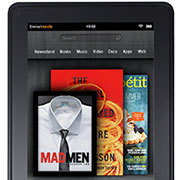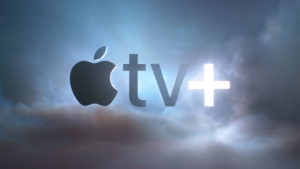
Amazon is looking to expand its mobileplatform with a line of tablet devices, with up to five or six SKUs(stock-keeping units). On Monday, reports surfaced that the retailer –which is marketing its own tablets as a way to help sell more digitalcontent including movies, music, apps and games — would likely beavailable in multiple sizes.
This move comes as sales of traditional packaged software, including CDs andDVDs, continue to fall, with consumers increasingly opting for digital delivery of content.Amazon is not new to the tablet space, but this multiple devicestrategy is an interesting move for a company that has traditionallyoperated as an online mail order retailer.
“I was expecting three but thought there was room for five, particularly ifthere are 4G options for the two higher-priced models,” said RobEnderle, principal analyst for the Enderle Group.
Amazon did not respond to our request to comment for this story.
One Size Does Not Fit All
The move to multiple devices is a significant departure from thenorm in the tablet space, where companies have traditionally limitedthe options — at least in physical size. But the fact that Amazon isreleasing multiple versions of its tablet devices suggests that asingle version might not be the best course of action.
“Despite Apple’s approach, which is heavily marketing supported, wearen’t a one-size-fits-all market,” Enderle told the E-Commerce Times.
“This was demonstrated by the Nexus 7 and Kindle Fire’s initialsuccesses,” he pointed out. “A line, from a marketing standpoint, is a far [better]way to make sure you can address most of the available market.”
Moreover, outside of Apple, no technology company likely has themarketing skills or is even willing to budget to drive people to a one-size-fits-all line, added Enderle.
Fragmentation of the Market
Choice is good, but there needs to be a rationale behind the variousoptions. Too much choice could actually confuse consumers.
“Multiple SKUs aren’t bad by themselves so long as they address veryspecific market dynamics or customer requirements,” said Charles King,principal analyst at Pund-IT.
“For example, the difference between aWiFi-only Kindle Fire and one which also supports 3G/4G ties intopotential partnerships with wireless carriers,” he noted, “and Amazon’s assumptionthat given the chance, consumers will adopt the Fire as a generalpurpose tablet, much as they have Apple’s iPad.”
There is also the danger that a vendor could miss the mark with toomany options or “slice and dice the market too finely,” King added.
The result could be a lot of unmovable product.
“That’s why initial launches tend to be modestly limited,” said King.”Google’s Nexus 7, with justWiFi and two configurations based on memory size, is a good example.If Amazon actually does deliver five to six SKUs, it means the companybelieves it has developed a much finer understanding of the marketthan it had last year. If and how well that strategy succeeds willdemonstrate the clarity of the company’s vision.”
Tablet Saturation
The other part of this equation is whether the market can even supportas many players in the tablet space, not to mention the number ofindividual SKUs. But more companies will likely enter in hopes ofcatching Apple and its iconic iPad, and while the question is whetherthis is even possible, it does give consumers more options.
“The market for tablets is heating up, because in the next 12 months,the race is on for second place behind Apple and the iPad,” said P.J.McNealy, a consultant with Digital World Research. “Microsoft, Amazonand Google’s Android devices are all trying to come up with a varietyof cheaper tablets with some differentiated features or functions. Itwill be a great time to be a consumer.”
Consumers will have more choices, but the final consideration iswhether Amazon is actually making the right move in pushing so manyoptions. It could ensure that there is truly something for everyone.
“This will allow them to bracket the market, which has all of thesesizes and resolutions with a single line,” emphasized Enderle. “Thisis the more typical hardware approach, and even Apple followed it withthe iPod. The weakness in this approach is that the iPad, which is theonly true premium offering in the market, has special services thatsurround it, which is why Apple, in the 10-inch space, is dominant.”
Additionally, just having a similar product doesn’t guaranteesuccess. But as a mass retailer that is looking to continue to sellmovies and music, it does give Amazon an advantage.
“If it doesn’t have the same premium concepts around it, alone itwon’t get similar volumes — so Amazon will have to ensure a priceadvantage,” said Enderle. “And since they can subsidize and Apple can’t, I’d expect them to price under Apple with a similar offering.”











































Social Media
See all Social Media